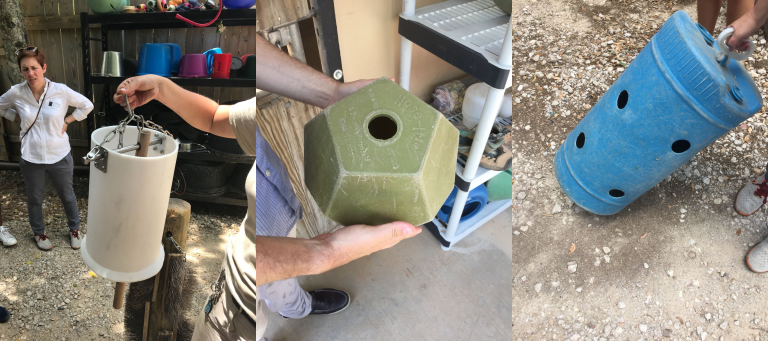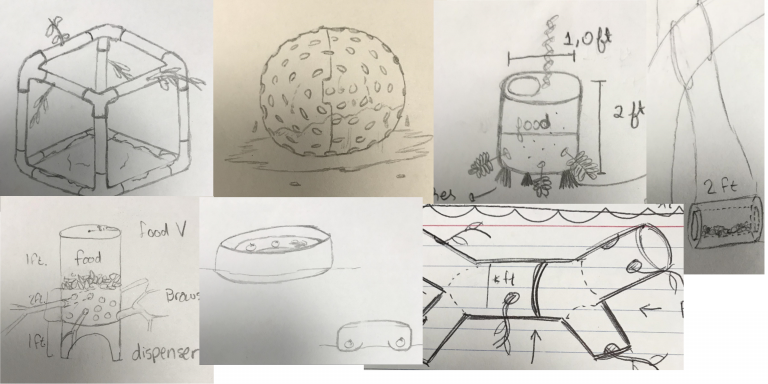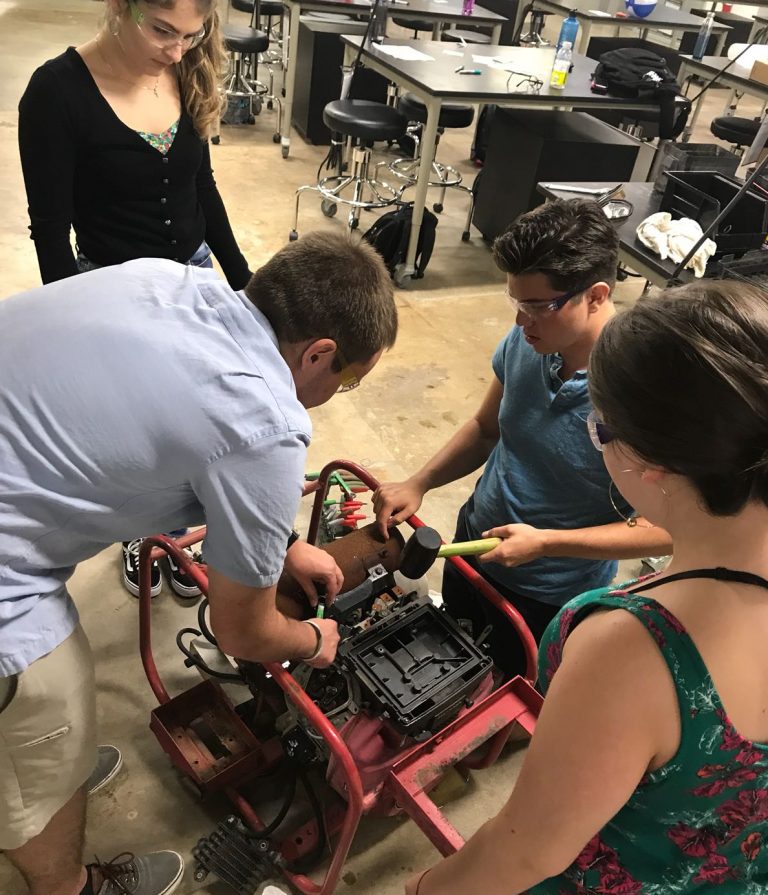Hello again! I’m back on campus this summer for SEED, the OEDK’s Summer Experience for Engineering Design (but you probably already know that if you’re reading this). I’ll be blogging my progress through the summer on my as-of-yet-undetermined project and extraneous adventures along the way. This isn’t my first project blog; I have all of last semester’s ENGI 210 projects here. What’s different about this time around is that the blog will follow a single, large-scale project as opposed to the weekly-semiweekly assignments of class.
It’s currently Thursday afternoon of week one. I’m barely four days into the internship, but it feels like so much has already happened. After introductions and icebreakers (including playing Smash and Mariokart—I’m getting paid to play games), we went through some teamwork and culture briefing exercises. Remember the deconstruction lab? Behold deconstruction lab 2:
This is the only(?) picture of the engine deconstruction. Why? Well, you may not be able to see it in the picture, but motor oil had spilled everywhere after some genius (hi!) decided to open the oil tank from the bottom. A phlegmy liquid poured forth and covered the entire area, including hands, in a viscous but smooth grease. Any attempt to pull a phone out for picture would have covered the phone in the same greasy mess. Ultimately, not much progress was made on the lawnmower engine because of the time lost in cleaning the oil spill and the rusty screws taking a while to remove.
The next day we began our crash course in engineering design, a five-day project from start to finish. The task? Create an enrichment device for the tapirs at the Houston Zoo. Animal enrichment basically means getting them to do something similar to wild behavior every so often, which tends to overwhelmingly revolve around food. It’s the best motivator not just for animals but also college students, right next to sleep. We walked through the first couple steps of the design process, including a client interview at the zoo, conveniently located essentially across the street from Rice. Memory, the zookeeper, answered our questions showed us behind the scenes, where they keep their current tapir toys.

Left – A hanging toy with a stick to hit, releasing food.
Middle – a dodecahedron to roll around, also filled with food.
Right – a Bongo toy, which does also rolls with food.
These toys gave us an idea of what the tapirs already have to play with and concrete examples of what an Animal Enrichment Device (AED, but not that AED) is. The next day, we figured out the design criteria for our new device and brainstormed ideas. There was a reasonable range of ideas (nothing as far out as selling a team member), from building a maze out of food to a tunnel made of brushes to floaty toys for the tapirs to play with.
Friday was culling day. All day. Eight hours of going through over a hundred ideas to pick the one to continue. Like a battle royale, but for tapir toys. The first step eliminated the improbable, like building a hill or growing food in the enclosure. Then, the screening removed the mundane and incapable, like many small floats or a smell palette. After these two steps, we were left with seven ideas:

Clockwise from top left: mud box, ice ball, hanging treatbasket, hanging log, floating branch, underwater feeder, and Kerplunk.
Only one would make it out alive. Scoring the ideas determined the winner: the hanging log!
Except it didn’t; the race was too close to call. Sitting five hundredths of a point under the hanging log was an idea known as Kerplunk, based on the eponymous tabletop game. Rohit, Julia, Xiaoyao, and I as judges had come to a consensus. The hanging log simply didn’t have any creative appeal. It had been done before; we had seen videos of other zoos with one for their tapirs. Kerplunk, on the other hand, was unique. Who had played Kerplunk with tapirs? No one, that’s who, because we did it first. Well, we will do it. Maybe. Let’s see how far we get.
TO BE CONTINUED. . .
Will Nick and crew save the tapirs from a Kerplunk-less life? What would Kerplunk for tapirs even look like? What will they do after they finish this project on Tuesday? How in the world can you finish and entire project in five days!? Find out next time on “Sprout: The Journey of a SEED” by Nicolas Escobar: coming to this blog soon!

